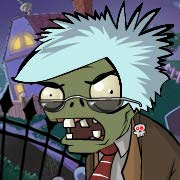The solar
light is very important for the life on earth. It’s one of the most important world
energy resources used by plants and seaweeds to transform the nutrients to
grow. The oxygen we
breathe is released in the process.
The plants
absorb water and minerals through the roots that end up in the leaves thanks to
a network of small conducts. The leaves absorb Carbon dioxide from the air and,
with the help of these 3 substances –water, minerals and Carbon dioxide– the
plants build their tissues. To be able to do so they need energy, the same as
we do for your foods. The energy the plants use is the solar energy they get
and transform it through the process of Photosynthesis
The
photosynthesis
 The leaves
of all plants have a green substance called chlorophyll that is used to retain light
energy. This energy allows them to separate the Carbon and Oxygen from the
Carbon dioxide and combine the carbon with the water and minerals stored in the
leaves. The results of these combinations are the sugars and starches that are
the majority of the nutrients of the plants. The oxygen is free and released
during the process. This all together is the process of Photosynthesis. That’s why
reforestation projects must be put in practice to help reduce carbon dioxide in
our atmosphere.
The leaves
of all plants have a green substance called chlorophyll that is used to retain light
energy. This energy allows them to separate the Carbon and Oxygen from the
Carbon dioxide and combine the carbon with the water and minerals stored in the
leaves. The results of these combinations are the sugars and starches that are
the majority of the nutrients of the plants. The oxygen is free and released
during the process. This all together is the process of Photosynthesis. That’s why
reforestation projects must be put in practice to help reduce carbon dioxide in
our atmosphere.
The humans benefit
from the solar light too
We need the
light energy, among other things, to produce an essential vitamin for our growth
and conservation of our bones and teeth: The vitamin D. Our body produces this
vitamin, in the skin, through a similar process to the photosynthesis of the
plants.
An excess
of light can be dangerous
A part of
the solar energy, the ultraviolet radiation, can seriously harm the living
things but, luckily, the largest part of all the radiation doesn’t get to us. It
is retained by the ozone of the outer layers of the atmosphere. The small
portion that gets through can harm our skin if we do no take cautions when we
expose ourselves to the sun for too long. A skin cancer specialist will recommend
we should not expose ourselves for too long especially during the summer.
The balance
of life
Without
living things there is no oxygen, without oxygen there is no ozone, without
ozone there are no living things…Life on Earth depends on the balance of many
factors that must act in the right measure: with no solar radiation there is no
life, but an excess of it could kill everything.
A short
history review: Ozone Formation
About 4 billion
years ago life started on Earth. However, for many million years there was no
life on the land, because of the high amount of radiation from the sun that hit
the Earth that made it impossible. The only living things were on the bottom of
the oceans, and were mainly seaweeds. At some point, a new kind of seaweed
appears, with chlorophyll that start occupying the shallow areas close to the
shores. There they get enough light to be able to do photosynthesis and were
safe from the excess of solar radiation. For million of years, these seaweeds
released oxygen, than ended up in the atmosphere. So, the primitive atmosphere
of the Earth began to change, reducing the proportion of carbon dioxide and
increasing the oxygen to the levels of our time. From the atmospheric oxygen,
ozone started to form, that accumulated in the outer layers of the atmosphere. The
ozone prevents harmful solar radiation to go through, and, when the ozone layer
had enough thickness, some organisms began living outside the water, on the
mainland. It was the beginning of the conquering of the planet.
The ozone
is not an especial or weird substance. The ozone is just oxygen in a tri-atomic
molecular form, this means, 3 atoms instead of 2 of the “normal” oxygen
molecules. This is the reason ozone is so unstable.
Stay tuned and will explain the Photosynthesis process in a chemical way ;)







5 comments:
interesting read, thanks for the info.
It's funny my wife is looking into solar panels for the house. She's green!
Well written and informative. Thanks!
Great information for anyone unclear on the basis of solar-related biology!
What a great post. Like cynical720 i am also looking into solar panels for my house.It would save a lot of money and in some cases the electric company will buy some of the energy back from you.
Post a Comment